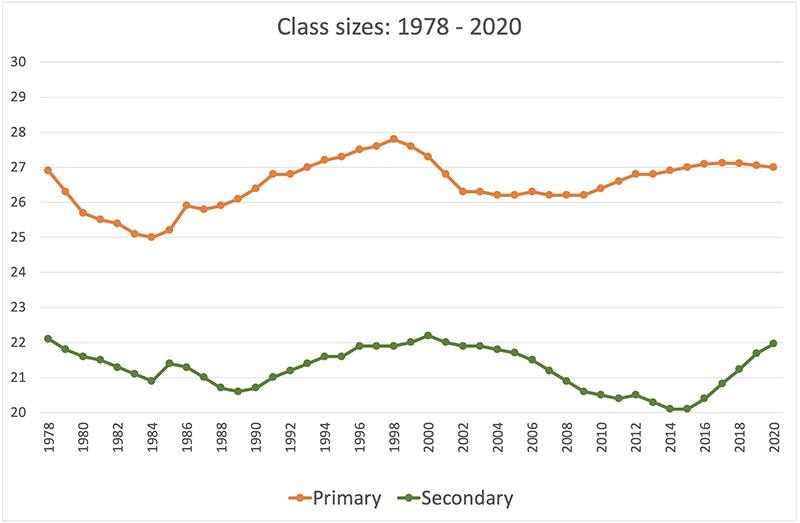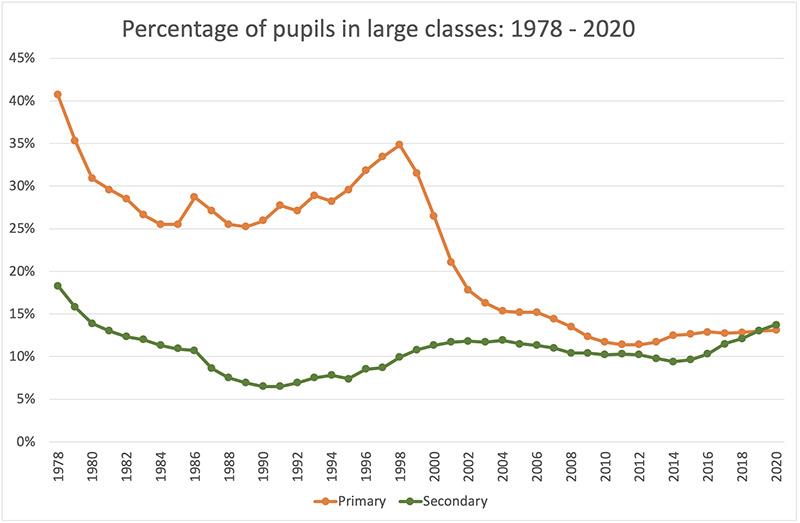It means that one in seven secondary students and one in eight primary pupils – almost one million children in total – are now educated in classrooms with more than 30 children.
There is further concern as the evidence shows that class sizes have risen faster in schools that teach the most deprived children.
The National Education Union (NEU) says that the “historic practice” of teaching poorer pupils in slightly smaller classes “has ceased over the last five years” due to the well documented real-terms cuts to schools funding.
The increases have hit hardest at secondary level. In 2010, 10.2 per cent of secondary students were in classes of more than 30. This figure drops to 9.6 per cent by 2015, but has since risen to 13.7 per cent by 2020.
At primary level, in 2010, 11.7 per cent of pupils were in classes of more than 30. This figure drops to 12.6 per cent by 2015, but has since risen to 13.1 per cent by 2020.
The increases since 2015 mean that 130,000 more secondary pupils and 20,000 more primary pupils are now in larger classes. It brings the number of students now learning in larger classes to 434,000 secondary school students and 560,000 primary pupils.
The analysis has been published by the Labour Party and comes as it launched its Bright Future Taskforce, which it says will deliver a long-term education plan for children’s recovery post-Covid.


Crowded? The first graph above shows how class sizes have changed since 1978, including the dramatic rises seen since 2015. The second graph shows the percentage of pupils learning in classes of 31 or more pupils since 1978 (source: National Education Union)
Kate Green MP, Labour’s shadow education secretary, said that 20 years of progress in reducing class sizes was being ”reversed”.
Welcoming the focus on this issue, Dr Mary Bousted, joint general secretary of the NEU, said:“This has a detrimental impact on children and young people's education. Clearly with such large numbers in any one class teachers and support staff have a far harder job in ensuring every child gets the attention they need.
“Much of this problem has been caused by the failure of government to address the shortfall in school places that has been an issue for many years. The lack of sufficient school and college funding has exacerbated this problem with many schools having to cut the number of staff to balance the books.
“Government needs to address this problem. Having a teacher and support staff dividing themselves between 30-plus children is not acceptable."
Overall average primary school class sizes have risen from 26.4 in 2010 to 27 in 2020. Average secondary classes meanwhile have risen from 20.5 to 22 during the same period.
